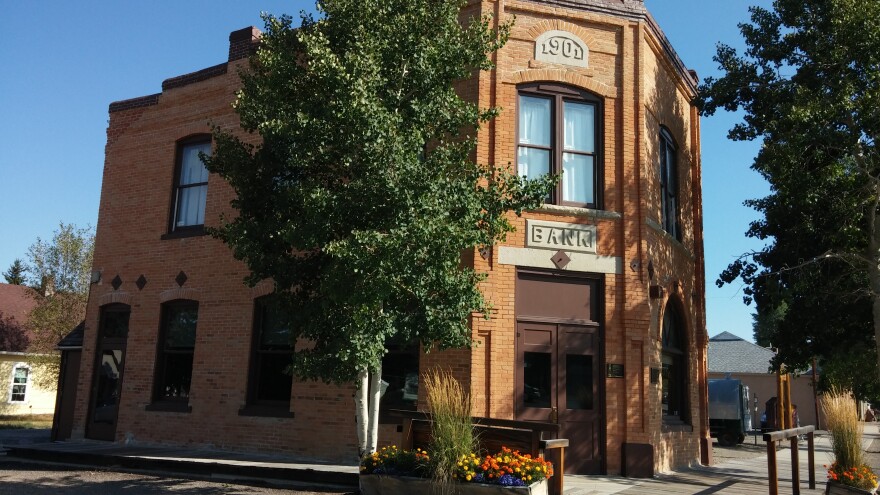Last year, Meeteetse Museums got a little over $100,000 of grant funding from the National Endowment for the Humanities (NEH) to fix a leaky roof and install solar panels. The final $10,000 or so was terminated by the Trump Administration last week.
Meeteetse Museums Executive Director Alexandra Deselms said while the roof replacement wrapped up at the end of 2024, the solar panels are still in progress. Finishing up the project is now a little less certain because of the sudden termination of the remainder of the NEH grant.
“ This isn't like funding for next year or something,” said Deselms. “These are legally awarded funds that we've been taking money out of.”
Deselms said the original NEH award might have been the organization’s biggest grant ever. The museum also had to match the $100,000 with other funding from smaller grants.
“It was really cool thinking that this town of approximately 300 people and a museum of two full-time staff managed to get this grant,” she said.

The organization partners with the local library and hosts student art shows. It also plays a role in the small town’s tourism industry, especially during the busier summer months.
“ People usually stop because of us, the chocolatier and the gas station,” said Deselms, who is also the director of collections for the Meeteetse Museums.
Roof woes
Deselms said the leaky museum roof was caused by an especially snowy winter a few years ago and an old, low-slope roof without a lot of good drainage infrastructure. Exhibits had to be wrapped in plastic to be protected from the leaks.
“We had those freezing cold temperatures and just so much snow that our roof started leaking,” she said. “The snow was just staying on there, freezing and refreezing and melting.”

There’s three separate museums under the Meeteetse Museums umbrella: the Charles Belden Museum of Western Photography, the Meeteetse Museum and the First National Bank Museum.

The leaky roof in question was for the building that houses the photography museum, which celebrates a 20th century cowboy who documented life on the nearby Pitchfork Ranch, as well as the Meeteetse Museum, which tells the story of the town and its bear, wolf and black-footed ferret neighbors.
The First National Bank Museum is in a separate brick building and is listed on the National Register of Historic Places. It was built in 1901 and operated as the town’s bank until 1975.
Patching the funding leak
Deselms said the intention of the solar panel additions to is to cut utility costs and redirect those funds to more programs, exhibits and collection care.
The museum is reaching out to donors and smaller grants to fill in the gap. But Deselms said there’s a lot of uncertainty about what federal funding for the humanities will look like going forward, especially as entire staffs at federal agencies like the Institute of Museum and Library Services are put on leave.
“If we can't have the federal grants funding, we're all going to be trying to get those resources,” she said. “It’s just going to be more competitive for those little grants."
Meeteetse Museums was also one of four institutions in Wyoming that was planning to participate in the Wyoming Humanities-sponsored Smithsonian exhibit “Many Voices, One Nation” as part of the 250th anniversary of the United States next summer.
“That's kind of suspended,” said Deselms. “We don't quite know what's happening with that.”
Deselms said the museum wants to keep hearing stories from community members and weaving that into its collections and exhibitions. She said that’s really what’s at the heart of libraries and museums.
“ They tell a story and they tell our story,” she said. “It's the story of how we got here, how we continue to be and what our futures might look like. If we look back at the past, how does that impact how we look at the future?”








